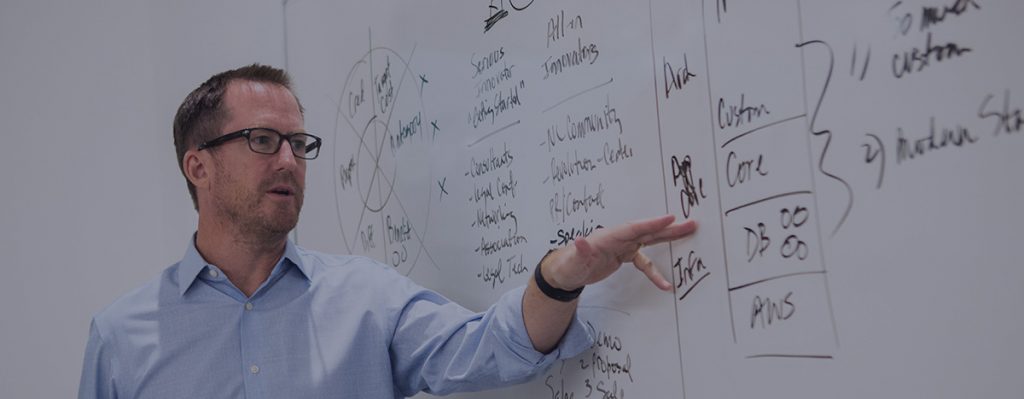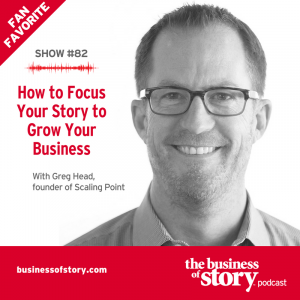Starting a business has never been easier, but growing a startup and scaling it to become a big business is harder than ever. Most who try get stuck or hit a plateau, including “A-players” and second-time founders, funded companies and “natural-born” entrepreneurs.
On a sunny Thursday in Phoenix in March 2017, I sat knee-to-knee with a successful founder named Sean. We were both at the same software industry conference, where optimism and smiles oozed from every session and hallway discussion.
This wasn’t one of those sunny conversations. “Something is seriously off in my business and it’s driving us crazy. I think you can help us.”
Sean told me about how his business had grown fast in the last five years, but then they stopped growing. He told me how his company grew to 50 talented employees in three countries and served over 2,000 businesses in the fitness industry. His company had a reputation for helping those businesses grow from entrepreneurial personal trainers to thriving multi-site fitness companies.
His team was helping entrepreneurs grow their businesses, yet his own business was not growing. Despite long hours, shifts in strategy, new marketing tactics, and new salespeople, the only thing that was growing in his company was frustration.
“All the things that worked for us when we were small no longer seem to work at all. It’s really painful. Some of our best team members are losing faith in my vision for the company. And I’m frustrated that the results aren’t there, even when we push really hard,” Sean shared.
“We want to continue to double our impact in our industry every few years, but we’re not going to get there unless something changes. We’ve been trying to build a new website for three months and we can’t agree on anything,” he told me.
Defining your start-up’s brand story to overcome its attention deficit disorder
Sean’s growth challenge is so common with successful startups that it’s actually predictable. I see it in almost all of the early-stage growth companies I interview and help every year.
Every up-and-running business has viable products and services to sell, but most don’t have enough pipeline, customers or revenue to sustain steady growth and achieve escape velocity. They are scrambling desperately to find more customers, add marketing channels, build new features or products, test new messages, try new marketing tactics, change pricing or hire new employees.
At some point, the startup energy and flexibility that worked so well no longer works. While some experimentation is required when you start a business, it will stunt your growth if you continue trying to sell to every possible customer, communicate all your features and keep adding new marketing and sales tactics.
I call this the “Startup ADD Trap,” and it doesn’t scale. What works to get your startup going is almost the opposite of what is needed to scale and grow when you get a little bigger.
It’s a hidden problem that drains energy and money from startups and creates the brutal crisis of “we stopped growing” that every entrepreneur dreads.
Companies that break through the Startup ADD Trap and grow big are doing something unique. It’s not just their culture, funding, business model, product-market fit or lean startup iteration. It’s finding their “Scaling Point,” which fuels the transition from startup “ADD” to laser-focused “OCD” growth that scales.
What EXACTLY is your brand’s market category?
Sean knew several companies I had helped solve this challenge and he was hopeful that I could help him. I agreed to fly to Orlando the following week to spend time with Sean and his team.
Sean and six leaders were at the meeting and three employees participated via video conference from London and Sydney. After the introduction, I began with a simple question.
“What exactly is not working in your business right now?” Sean added, “Anything goes, guys. Bring it on.”
I started writing fast on the whiteboard and asked more questions. Thirty minutes later, we had a list of 25 items that were frustrating and visible to all the leaders in the company. This included the website makeover that was stalled, attracting the wrong kinds of employees and new salespeople who couldn’t improve their low closing rates with good leads.
“Thanks for being honest. This looks messy and challenging, but this is completely normal for companies in between startup and scale-up. I see it in every company I work with. All these problems are fixable and won’t require changing your team, or investing another year of late nights and endless experimentation.”
“At some point, you need to stop saying Yes to everything that could generate revenue and start saying No to things that are not in your explicit focus.” – Greg Head
First, we started with the simple question that all their new customers asked: “What exactly does your company do so I can evaluate it and maybe buy from you?” Do you offer consulting, training, online education, events, coaching or something else?
We started by making a list of what all these leaders called their type of company–their specific category. We came up with ten different answers from ten people, including Sean’s sales and marketing leaders.
“So you are different things for different people, depending on who is talking to a new customer on a given day?” Though not recommended, this can work if you are small and every new customer gets a custom sales pitch from the founder. This doesn’t work with 50 employees, a website that reaches global markets and growth goals that keep getting bigger each year.
We continued through the rest of the Scaling Point process, identifying target customer groups that were happy and others that were not. We defined specifically how they helped these customers, how their solution was clearly different than the competition. We also learned why Sean created the business and uncovered why they all cared so much about it now.
Declare your category, define your brand story

By 1:00 we had exposed the problem that was now clear to everyone: it was a category problem. They hadn’t done the work to simply describe what exactly they do and how they can be best in their market for their target customer. Their market was waiting for them to declare it simply and clearly on their website, in their marketing, and in every sales conversation. They hadn’t solved that puzzle yet.
With some help from me and the Scaling Point process, it was right there on the wall. Sean stood up and declared, “There it is! We are the leading business coaching company for fitness coaches. Everything we do fits into that; that’s what we really are. Why didn’t we see that before?”
This is the Startup ADD Trap, and it’s a normal part of transitioning from a startup to a scaled-up business. This is the brutal reality for all startups and small businesses that want to scale up and become valuable market-leading companies. Not doing the work to transition from Startup ADD to Scale-up OCD will stall your growth, and it can kill your company.
“We are the leading business coaching company for fitness coaches.”
You need to survive long enough to find your Scaling Point, then transition and bet everything on it–to the exclusion of everything you could do to survive. At some point, you need to stop saying Yes to everything that could generate revenue and start saying No to things that are not in your explicit focus.
After that epiphany moment with Sean and his team in his office, we continued by aligning other elements of the Scaling Point strategy around their clear category focus. Everything fell into place. Their simpler story was many times more powerful and everyone was excited. By 3:00 that afternoon, we drafted their new website homepage with new messaging which clearly improved the impact.
It only took a month for their Scaling Point strategy to be reflected in everything they did: lead generation, content stories, their website, product names and employee recruiting efforts. Their hard work could now be used most productively to tell their story and help their customers succeed.
Finding and implementing your Scaling Point makes everything work better, including your marketing, sales, product development, customer satisfaction, employee recruiting and fundraising.
Listen to Greg Head on episode #82: How to Focus Your Story to Grow Your Business








